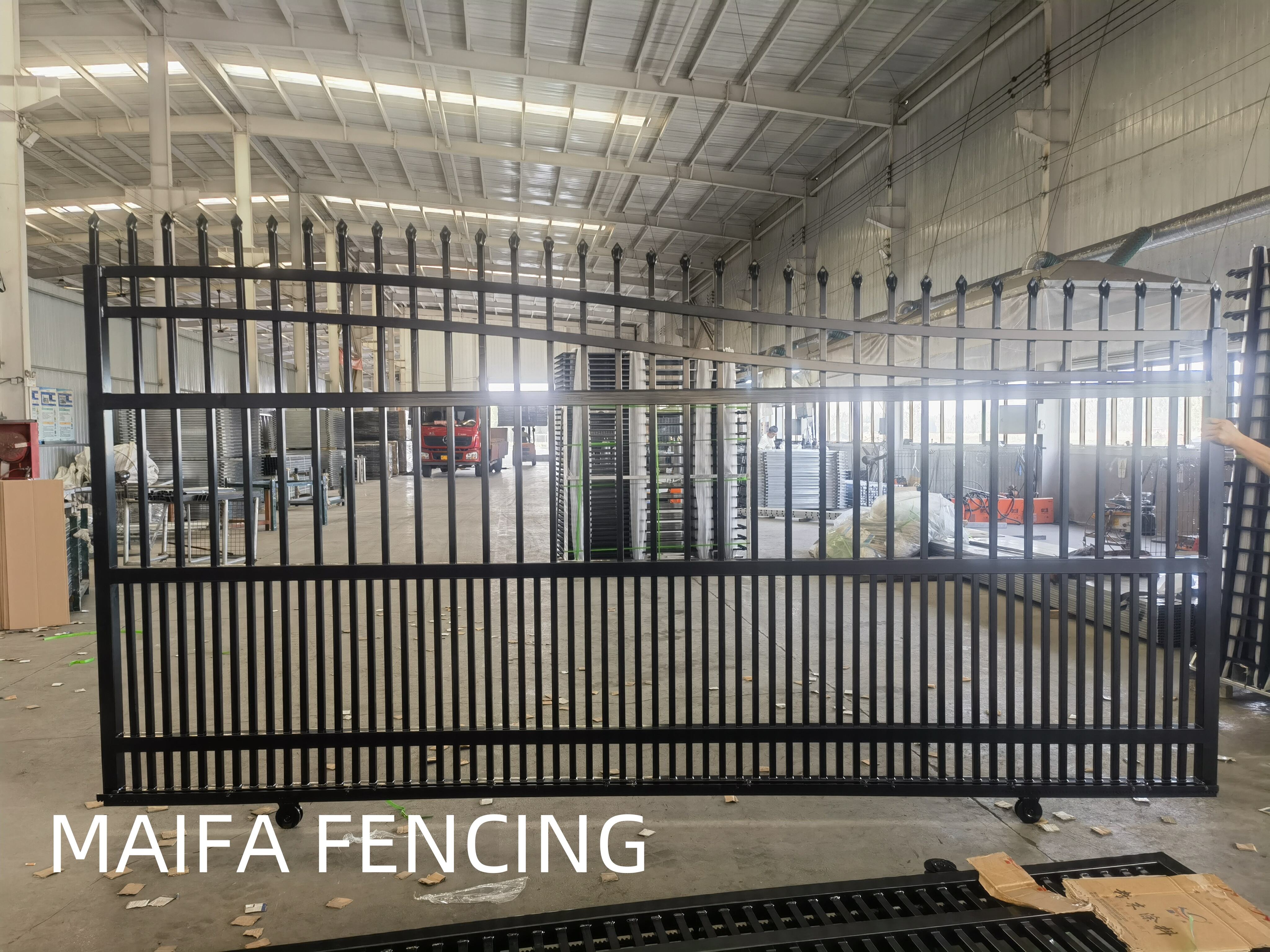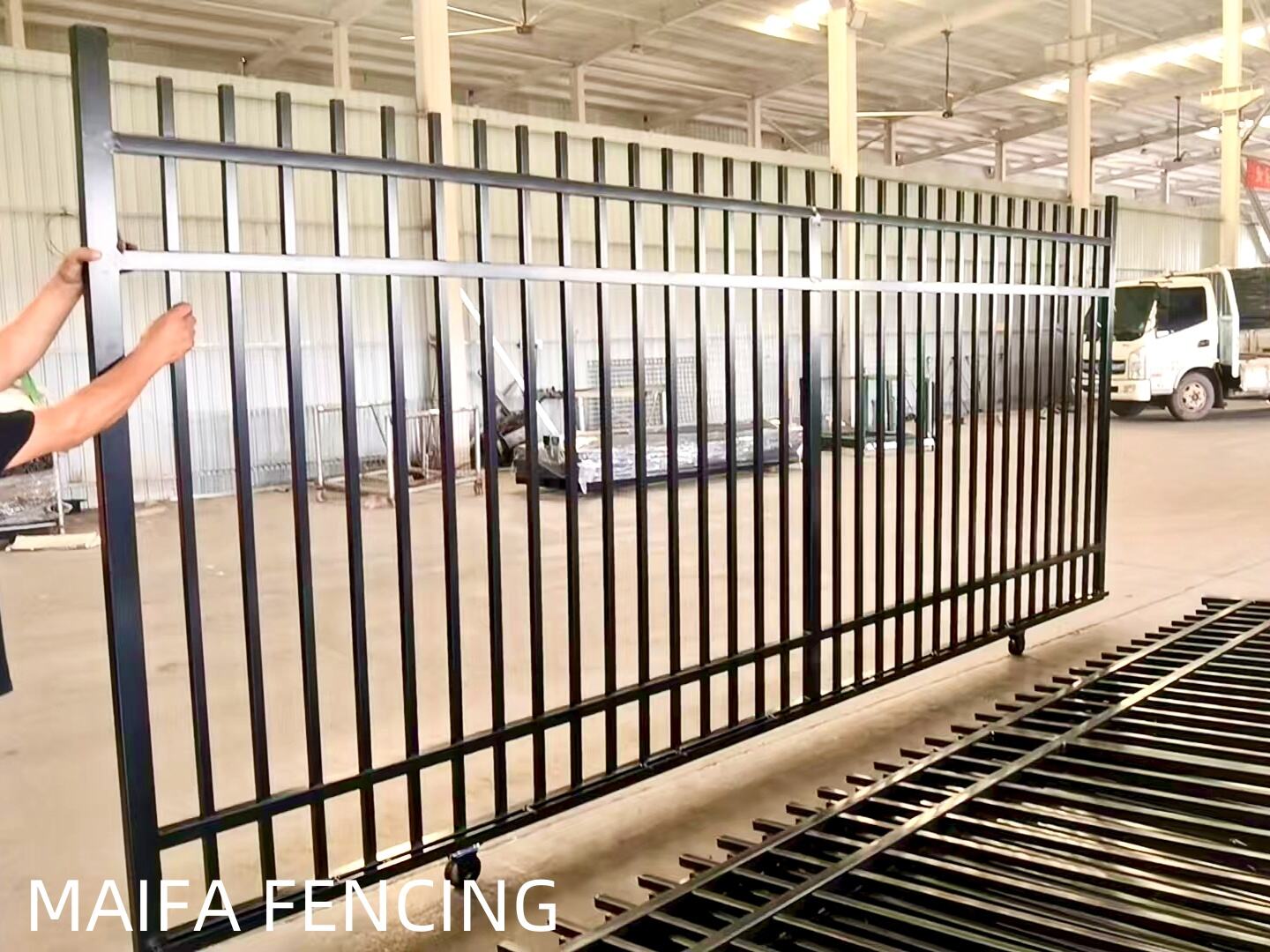Choosing the Best Material for Garden Fences
Understanding Garden Fence Materials and Their Durability
Choosing materials that last makes all the difference for garden fences facing those constant seasonal changes without losing their strength. The latest National Gardening Survey from 2024 actually showed something interesting: around two thirds of people who put up fences care more about how long the materials will hold up than what they pay upfront. Wood still has its fans because nobody can beat that natural look, but there are better options these days. Vinyl and composite materials really stand out since they handle bad weather so much better. And let's face it, nobody wants to spend time fixing their fence every few years. Landscape experts say good quality vinyl fencing can stick around for at least 25 years with almost no maintenance needed.
Wood Garden Fences: Natural Beauty with Functional Benefits
Wooden fences provide timeless elegance while serving practical needs. Cedar and redwood naturally resist rot, extending their lifespan to 15–20 years with proper sealing (Forest Products Laboratory 2023). For optimal performance, choose pressure-treated posts and install gravel boards to prevent ground moisture damage.
Vinyl Fencing: Low-Maintenance and Weather-Resistant Performance
Vinyl emerges as the premier low-maintenance option, retaining its color and shape through extreme temperatures. Unlike wood, it won’t warp or splinter—a 2024 fencing materials comparison showed vinyl requires 73% less annual maintenance than traditional wood alternatives.
Composite and Metal Options for Modern Garden Fence Designs
For contemporary landscapes, composite materials blend recycled wood fibers with polymers to create fade-resistant screens. Cor-Ten steel develops a protective rust patina over time, offering industrial charm with 40+ year lifespans in coastal climates.
Comparing Longevity and Cost of Wood vs. Synthetic Garden Fences
While wood costs $15–$30 per linear foot initially, synthetic materials prove cost-effective long-term. Composite fences average $22–$45 per foot but eliminate staining expenses, breaking even within 7–10 years compared to wood’s ongoing maintenance costs.
Designing Garden Fences for Aesthetic Appeal and Curb Match
Matching Garden Fence Style to Home Architecture and Landscape
The garden fence needs to match what's going on with the house architecture style. Think about it this way: those old fashioned Tudor houses look great with traditional wooden picket fences, but if someone has a mid century modern place, going for horizontal metal slats really makes them stand out. According to some landscaping pros we talked to, around two thirds of all curb appeal upgrades actually begin at the property line where fences act almost like they're part of the building itself. Out in the country, simple split rail fencing works wonders against wide open spaces, while city dwellers often find that sleek steel designs with clean lines fit right into their modern surroundings better than anything else would.
Modern, Rustic, Asian-Inspired, and Industrial Fence Design Ideas
Expand your design palette with thematic approaches:
- Modern: Sleek horizontal aluminum panels with integrated planter boxes
- Rustic: Reclaimed barn wood with irregular spacing for organic texture
- Asian-inspired: Bamboo screens topped with pagoda-style lattice caps
-
Industrial: Corrugated Corten steel sheets with exposed bolt details
Decorative fencing solutions have surged 42% in popularity since 2022, as homeowners seek personalized boundary statements that double as outdoor art installations.
Using Color, Texture, and Proportion to Enhance Visual Harmony
The right colors can really change how we see space in our outdoor areas. Dark gray stains work wonders on small backyards, making them look longer than they actually are. White lattice panels are great too for those tight side gardens because they let light bounce around instead of getting swallowed up. Most landscape designers suggest keeping fences no taller than two thirds what the nearby trees will eventually grow to. That creates better balance between vertical elements. According to recent research from landscape architects in 2024, mixing different textures matters a lot. When people combine matte surfaces with some shiny details, their gardens feel more cohesive overall. The study showed this approach makes spaces look better together about 31 percent more often than when everything matches exactly.
Tall Garden Fences for Privacy Without Compromising Aesthetics
Privacy-focused designs now integrate functional beauty through:
- Laser-cut metal screens casting intricate shadow patterns
- Double-layer wood slats with alternating angles for airflow and opacity
- Living walls using evergreen ivy trained on powder-coated grids
These solutions achieve 90% visual coverage while maintaining architectural relevance—a critical balance in 78% of urban garden renovations.
Navigating HOA Restrictions vs. Homeowner Preferences for Bold Fences
Local rules often get in the way of creative ideas, but sometimes there's a happy middle ground. Take this town in Texas where residents wanted something special for their fences. They ended up with what they called accent fencing, getting around restrictions by using approved materials for most of the fence but adding these cool removable acrylic pieces etched with lasers for that personal touch. The community loved it too, with nearly 95% approval rate. Want similar success? Make sure to include mood boards when applying for permits. These should show how those striking design elements actually work with what's already there in terms of texture and roofline details throughout the neighborhood.
DIY Garden Fence Ideas for Budget and Sustainability
Affordable garden privacy solutions using recycled materials
Garden fences don't have to come from brand new materials when we can give old stuff a second life instead of letting it go to waste. Plastic barrels that once held paint or chemicals, those forgotten doors gathering dust in storage sheds, even broken windows from renovations all work great as privacy screens for gardens. The savings? Probably somewhere between half and two thirds cheaper than buying everything fresh off the shelf according to some recent home trends research from last year. When it comes to making sure our fences stand up against rain and sun, there's this recycled plastic lumber stuff out there now that lasts just as long as regular wood but doesn't need painting or sealing every few months. And why not get creative with gutter systems turned into wall mounted plant boxes or stack pallets together to form living walls where plants grow right through them? Combines beauty with actual usefulness in one neat package.
Building a pallet wood garden fence for rustic charm
Old shipping pallets scavenged from warehouses or construction sites work great as budget friendly materials for building fences around the yard. Most standard sized ones measure around 4 feet by 4 feet and can usually be picked up for less than fifteen bucks. To put them together, attach the pallets upright on metal posts with those rust proof brackets everyone seems to have lying around these days. Leave about an inch or so between sections so air can circulate properly. Before putting it all together, take time to sand down any splinters or jagged corners, then slap on at least two layers of exterior grade sealant to keep moisture out. The finished fence looks rustic and charming, making it perfect for enclosing compost bins or marking off garden beds without breaking the bank.
Combining lattice panels with climbing plants for natural screening
Install pressure-treated lattice sections between fence posts, leaving 6–12" clearance at the base for maintenance. Train fast-growing vines like clematis or jasmine across the grid, achieving 90% visual coverage within two growing seasons. This living screen reduces ambient noise by 4–7 decibels while attracting pollinators.
Integrating solar lighting into DIY garden fence designs
Embed waterproof solar caps into fence posts or weave LED string lights through lattice openings. Position fixtures 18–24" above ground level to illuminate pathways without creating light pollution. Solar-powered systems eliminate wiring costs and reduce energy use by 85% compared to traditional outdoor lighting (2022 Renewable Landscaping Study).
Living Garden Fences: Vertical Gardens and Green Privacy Screens
Bamboo Screens and Living Walls for Natural Garden Seclusion
Bamboo screens give instant privacy thanks to how thick they grow, cutting out around 85% of background noise and forming pretty good visual blockades too, as noted in the Urban Greening Report from last year. Take it a step further with living walls that mix support structures with vines such as English ivy or fragrant jasmine. The cooling effect these green installations create is actually pretty impressive. Research on vertical gardens shows they can bring down temperatures in cities by nearly 9 degrees Fahrenheit when compared to regular fences. That makes them not just attractive but also practical solutions for hot urban areas.
Designing Green Fences That Improve Air Quality and Beauty
Strategic plant selection transforms vertical gardens into air-purifying systems. A 10'x6' living wall with spider plants and peace lilies can filter 65% of airborne pollutants in its immediate vicinity. Designers balance evergreen species (for year-round coverage) with seasonal bloomers like clematis to create evolving color palettes.
Irrigation and Plant Selection for Sustainable Living Garden Fences
Modern vertical gardens use 40% less water than traditional landscaping through:
- Drip irrigation systems with moisture sensors
- Drought-resistant native species like sedum or lavender
- Recirculating hydroponic setups for closed-loop water use
These systems require only 15–20 minutes of weekly maintenance while supporting pollinator populations.
Case Study: Urban Patio Transformed With Modular Vertical Garden Fence
A 450 sq ft Brooklyn patio achieved complete privacy using stackable planters filled with:
- Columnar apple trees (Malus 'Northpole') for height
- Espaliered pear trees along perimeter walls
- Modular fern panels in shaded areas
This hybrid approach created a USDA Zone 6-approved green fence that increased property value by 12% within two growing seasons.
Enhancing Deck and Patio Areas with Functional Garden Privacy Solutions
Modern outdoor spaces demand privacy solutions that balance functionality with aesthetic integration. A 2023 survey by Outdoor Living Insights found that 68% of homeowners prioritize garden fences that serve multiple purposes beyond basic boundary definition when enhancing decks and patios.
Extending Privacy to Elevated Decks Using Side Panels and Planters
Modular screen systems paired with integrated planter boxes address both visual screening and microclimate control. Recent deck privacy innovations demonstrate how cantilevered planters with trailing vines reduce wind exposure by 42% while maintaining sightlines, based on urban patio case studies.
Patio Privacy Walls Using Glass, Metal, or Translucent Garden Panels
| Material | Light Control | Maintenance Frequency | Sound Reduction |
|---|---|---|---|
| Frosted glass | 70% diffusion | Annual cleaning | 25 dB |
| Perforated metal | Adjustable patterns | Biannual inspection | 30 dB |
| Polycarbonate | 85% UV block | Quarterly washing | 20 dB |
Research from leading manufacturers shows metal privacy walls with geometric cutouts outperform solid wood in wind resistance (89 mph vs. 65 mph thresholds).
Combining Seating Walls With Garden Fencing for Dual Functionality
Built-in bench systems within privacy walls increase usable deck space by 19% compared to freestanding furniture layouts. The 2024 Outdoor Design Report notes curved seating walls with integrated planter pockets reduce ambient noise by 31% in urban environments.
Integrating Planters and Trellises Into Deck and Patio Fence Systems
Vertical gardening systems attached to privacy screens can improve air quality by 34% within immediate seating areas. A modular vertical garden study demonstrated how integrated irrigation systems in trellis fences reduced water usage by 28% compared to traditional container gardens.
FAQ Section
-
What is the most durable material for a garden fence?
Vinyl and composite materials are highly durable, often lasting for 25 years or more with minimal maintenance. -
How can I match my garden fence to my home architecture?
Choose materials and styles that complement your home's architectural style, such as wooden fences for traditional homes or metal slats for modern designs. -
Can I use recycled materials to build a garden fence?
Yes, recycled materials such as pallets and plastic barrels can be used to create budget-friendly and sustainable garden fences. -
How do living garden fences improve air quality?
Living fences with plants like spider plants and peace lilies can filter airborne pollutants, enhancing the air quality around them. -
Do DIY garden fences require a lot of maintenance?
It depends on the materials used; recycled plastic lumber and vinyl require less frequent maintenance than wood.
Table of Contents
-
Choosing the Best Material for Garden Fences
- Understanding Garden Fence Materials and Their Durability
- Wood Garden Fences: Natural Beauty with Functional Benefits
- Vinyl Fencing: Low-Maintenance and Weather-Resistant Performance
- Composite and Metal Options for Modern Garden Fence Designs
- Comparing Longevity and Cost of Wood vs. Synthetic Garden Fences
-
Designing Garden Fences for Aesthetic Appeal and Curb Match
- Matching Garden Fence Style to Home Architecture and Landscape
- Modern, Rustic, Asian-Inspired, and Industrial Fence Design Ideas
- Using Color, Texture, and Proportion to Enhance Visual Harmony
- Tall Garden Fences for Privacy Without Compromising Aesthetics
- Navigating HOA Restrictions vs. Homeowner Preferences for Bold Fences
- DIY Garden Fence Ideas for Budget and Sustainability
- Living Garden Fences: Vertical Gardens and Green Privacy Screens
- Enhancing Deck and Patio Areas with Functional Garden Privacy Solutions



